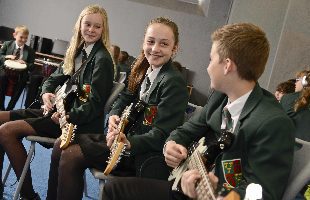Dance
| No of Units: 4 | Awarding Board: AQA | Course Code: 8236 |
GCSE Dance is an additional GCSE in place of Core PE and will require you to put in additional work. You will be assessed and have exams in Dance. An application form for the Dance course will be emailed to all parents and shared with students in January.
Component 1: Performance And Choreography
Performance
- Set phrases through a solo performance (approximately one minute in duration)
- Duet/Trio performance (three and a half minutes in duration) taught by your teacher.
Choreography
- You will choreograph your own dance based on a number of stimuli provided, you will carry out your own research to come up with your own dance idea and theme. Solo or group choreography – a solo (two to two and a half minutes) or a group dance for two to five dancers (three to three and a half minutes).
Component 2: Dance Appreciation
- Developing knowledge and understanding of the work of different choreographers and professional dance works.
- Critical appreciation of your own work.
- Knowledge and understanding of choreographic processes and performing skills.
Assessment:
Component 1:
Performance – 30% of GCSE, 40 marks
Choreography – 30% of GCSE, 40 marks.
Component2:
Dance Appreciation – written exam 1hr 30minutes. 40% of GCSE, 80 marks.
Further Information:
GCSE Dance aims to develop student’s physical, technical, and expressive skills, as well as knowledge and understanding of dance through performance, choreography, and critical appreciation. This course aims to build on whatever experience students have in dance. Students will study a range of dance styles which acknowledge aspects of repertoire of dance that can be seen in the UK today. Students will be able to choose any style in which to perform and choreograph.
As performers, students develop confidence and self-esteem. They develop self and body awareness as well as sensitivity to others and team working skills. Effective performance requires physical effort and the determination to succeed and improve. As choreographers, students employ the skills of problem-solving and creativity. Effective choreography requires imagination and the ability to synthesise a number of elements. In directing others, students develop their interpersonal and communication skills. As critics, students make informed decisions about the dances they see. They articulate their knowledge, opinions and preferences. Viewing professional works fulfils students’ cultural entitlement and broadens their artistic experience.
Possible Career Destinations:
Work within Theatre, Professional Dancer, Physiotherapy, Dance and Movement Therapist, Artistic Director, Teacher, Choreographer, Arts Administrator
For further information contact: Miss A. Green






